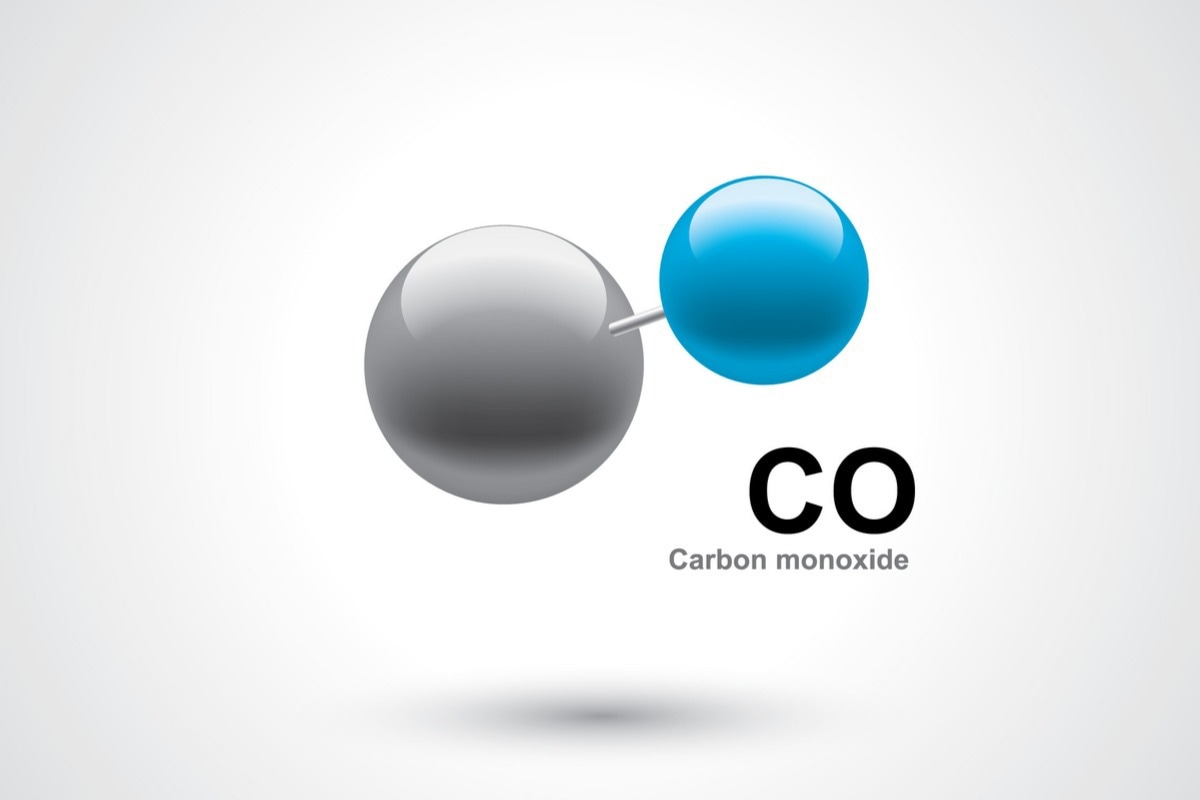 Interview conducted by Danielle Ellis, B.Sc.Aug 2 2022
Interview conducted by Danielle Ellis, B.Sc.Aug 2 2022In this interview, News-Medical speaks to Professor Leo Otterbein about a novel way to deliver carbon monoxide to the body while bypassing its potentially hazardous effects.
Please can you introduce yourself, tell us about your scientific background, and what inspired your latest research?
My name is Leo Otterbein from the Beth Israel Deaconess Medical Center in Boston, Massachusetts. I am a professor at Harvard Medical School, where I've been for the last 18 years. Prior to that, I was at the University of Pittsburgh after completing post-doctorate work at Yale University. My Ph.D. was completed at John Hopkins University in Baltimore, and I graduated in June 2000. My dissertation thesis work was and continues to focus on carbon monoxide and how it functions in the body.
I spend most of my time running a basic research laboratory where we study carbon monoxide in various models of human disease. The work has evolved over the last 18 years and is now in ongoing clinical trials, and we continue our efforts towards understanding how it works, why it works and trying to change the perception of why it should be viewed as something more than a toxic gas.
The original and most straightforward way to study carbon monoxide is to administer it as an inhaled gas as you easily take in gases through the lungs. When we first started these experiments, the simple way to deliver it was to put an animal into an exposure apparatus that allowed them to breathe in the carbon monoxide. Of course, we expected a lot of negatives based on the vast literature basis, but we observed that the animals tolerated it well and continued our research, testing the ability of CO to provide salutary effects in a variety of disease indications. Our work has now expanded worldwide, with dozens of labs working on understanding the effects of this molecule in health and disease.

Image Credit: honglouwawa/Shutterstock.com
As time progressed, several researchers tried to devise a way to administer carbon monoxide through other delivery modalities instead of through inhalation. It was probably the first time people started to believe that carbon monoxide didn't have to be administered as an inhaled gas, and because of its unique ability to freely diffuse through the body much like oxygen, efforts began to find alternative means to administer CO.
I met with colleagues James Byrne and Giovanni Traverso, and we discussed the challenge of identifying novel means to administer carbon monoxide that would be safe, effective and get away from the challenges that inhalation and small molecules present. Entirely to their credit, they asked the question, 'why don't we incorporate this into a foam or solid?' And collectively, we united our areas of expertise, which became the premise of this latest work. It's incredibly exciting because we have shown that you can put as much carbon monoxide in foam as you can by breathing it, and you can deliver it very easily through the stomach or the rectum. We coined the term Gas Entrapping Materials or GEMs which collectively includes foams, gels, and even solids.
Medical gas therapy is a familiar element of healthcare. What is the current state of the use of gases in medicine, and how are they usually administered?
The gas that's most notorious and has the best reputation as a therapeutic is nitric oxide (NO). The Nobel Prize was awarded in 2000 for the discovery that this gas molecule can impart critical biological effects. We all know that oxygen is critical for life, but the findings that nitric oxide was important in cellular function throughout the body were the first to show that all cells generate specific gases endogenously to keep the body's processes functioning normally. NO is a powerful therapeutic for neonates with pulmonary hypertension and for use in those with cardiovascular disease.
It turns out that carbon monoxide has similar properties. All cells of the body make carbon monoxide continuously and paradoxically will make more of it when the body is under stress, such as in situations of inflammation or disease states. Peter Barnes demonstrated that carbon monoxide could be measured in the breath of sick patients and that it correlated with disease severity. So the sicker one is, the more carbon monoxide was produced, and as you got better, the amounts of carbon monoxide went down in the breath.
Carbon monoxide is associated with poisoning and death but has been shown to have beneficial qualities in small doses. What do we currently know about the use of carbon monoxide in human health?
The short answer is that trials continue and have not reported any adverse events associated with treatment. Ongoing trials are investigating carbon monoxide in pulmonary fibrosis and adult respiratory distress syndrome (ARDS), where It's proven safe in those patients. There is another trial that has been started with a company I'm affiliated with, based out of San Diego, California. They are looking at delivering carbon monoxide formulated as a treatment you can drink and are interested in clinical trials for sickle cell anemia and Parkinson's disease patients with the idea that you could administer carbon monoxide as a liquid through the stomach and intestine.
Cooking and inflammation are seemingly unrelated topics. How did techniques used in molecular gastronomy inspire the novel method of carbon monoxide delivery you detail in your study?
I'll give full credit to James Byrne and Giovanni Traverso. They are drug delivery bioengineers. I think they liked the idea that if you can find something safe and easily amendable to drug delivery, you save yourself an enormous amount of time. So invoking gastronomy is just a better, easier, and more straightforward way of delivering carbon monoxide.

Image Credit: lunamarina/Shutterstock.com
We had a challenge and posed the question: How can we get gas into the body that does not involve inhaling it through the lung? They realized that when you make cappuccinos or when upscale restaurants use it in their artistic food presentation, they use gas to create the foams, so we asked, 'why would it not work for use in medicine?'
Please tell us how you carried out your research and what were your main findings?
The research was a team effort and the different researchers each brought their unique thoughts and expertise. My side of the collaboration was to try to answer the question, how do we use this in animals and test this in humanly relevant models of disease?
We considered the most likely place for this topical application of carbon monoxide to be most effective and tested it in two different models of intestinal disease where we could place the foam directly at the site of inflammation and tissue injury. One was colitis or inflammatory bowel disease, and the other was proctitis, which is a radiation-induced injury that can occur in cancer patients. We envisioned the CO foam or GEM could be developed as part of a treatment strategy and observed remarkable protective effects in reversing disease progression and promoting tissue healing.
Gas Entrapping Materials
The next question we asked was whether we could administer the foam via the intestine to effectively deliver CO and have it prove useful to organs distant from the intestine. That's where we utilized a liver injury model. My lab has a longstanding interest and methodologies to study drug-induced acute liver injury, and it's clinically relevant. In the US, in particular, there is a clinical problem where people overdose on substances like acetaminophen (Tylenol) because they do not realize that there are limits on how much can be taken over a period of time and that if you take too much, too fast, the liver will fail. We demonstrated that if you apply topical delivery of CO foam through the intestine, it prevented liver damage caused by acetaminophen.
We next tested the foam in pigs to show that foam was similarly effective and bioavailable as was observed in mice. We have not yet studied disease pathology in pigs due to time constraints. We're doing that now as our next set of studies, and that's going very well. Importantly, this aspect of the research demonstrates that this technology is not limited to rodents.
What advantages does a foam present over current methods of treating inflammatory conditions like colitis, such as immune-suppressing drugs?
I don't know if I would say that we are looking to replace current medications and standard of care. It may be that carbon monoxide would be used as an adjuvant. In some situations, carbon monoxide can enhance the effects of other drugs for different reasons.

Image Credit: Oksana Mizina/Shutterstock.com
How important is the element of control when designing novel delivery mechanisms for therapeutics?
It's of enormous importance when considering CO primarily because of society's negative view of carbon monoxide driven by media coverage. One of the challenges is not just whether the patient will accept being treated with carbon monoxide, but the individuals, whether it be the healthcare workers administering the carbon monoxide or the clinicians prescribing it for use as therapy, to feel comfortable and safe when using the gas in a hospital setting. Using the inhalation route also brings challenges such as variability in inhalation to ensure patients are inhaling appropriate amounts that are therapeutic. Correct use of delivery masks, as well as differences in breathing rates, will affect precise dosing. Additionally, inhaled gas requires large compressed gas cylinders to be stored and transported around hospitals and loading docks. In contrast, foams can be very well-managed because of the small and precise amounts that can be delivered. So you know exactly how much you're going to deliver to the body and how and where you're going to administer it. Our studies in rodents and pigs clearly demonstrate that we could give very reproducible amounts and measure it very accurately in the blood.
What is next for yourself and your research?
The research in my laboratory continues to focus on understanding how carbon monoxide works in health and disease. We're interested in understanding how and why carbon monoxide changes the functionality of cells. In terms of the foam technology, the next step is to begin moving this into patients.
Where can readers find more information?
About Leo Otterbein
Dr. Otterbein obtained his Ph.D. from Johns Hopkins in 2000, where his graduate thesis work initiated the field of research into the biological effects of carbon monoxide and has driven the field ever since. He is currently a Professor of Surgery at Harvard Medical School and Director of Translational Research at Beth Israel Deaconess Medical Center in Boston. His idea to use carbon monoxide as a therapeutic gas evolved from an experimental hypothesis to  proof of principle bench research and now to ongoing clinical trials. His work, including the collaborative efforts in the recent work on GEMs continues to contribute to the field of gasotransmitter biology in medicine that he helped pioneer. He is funded by the NIH, the Department of Defense, and various foundations, including the National Football League Players Association, to study the salutary effects of CO and to better understand its cellular and molecular mechanisms of action.
proof of principle bench research and now to ongoing clinical trials. His work, including the collaborative efforts in the recent work on GEMs continues to contribute to the field of gasotransmitter biology in medicine that he helped pioneer. He is funded by the NIH, the Department of Defense, and various foundations, including the National Football League Players Association, to study the salutary effects of CO and to better understand its cellular and molecular mechanisms of action.